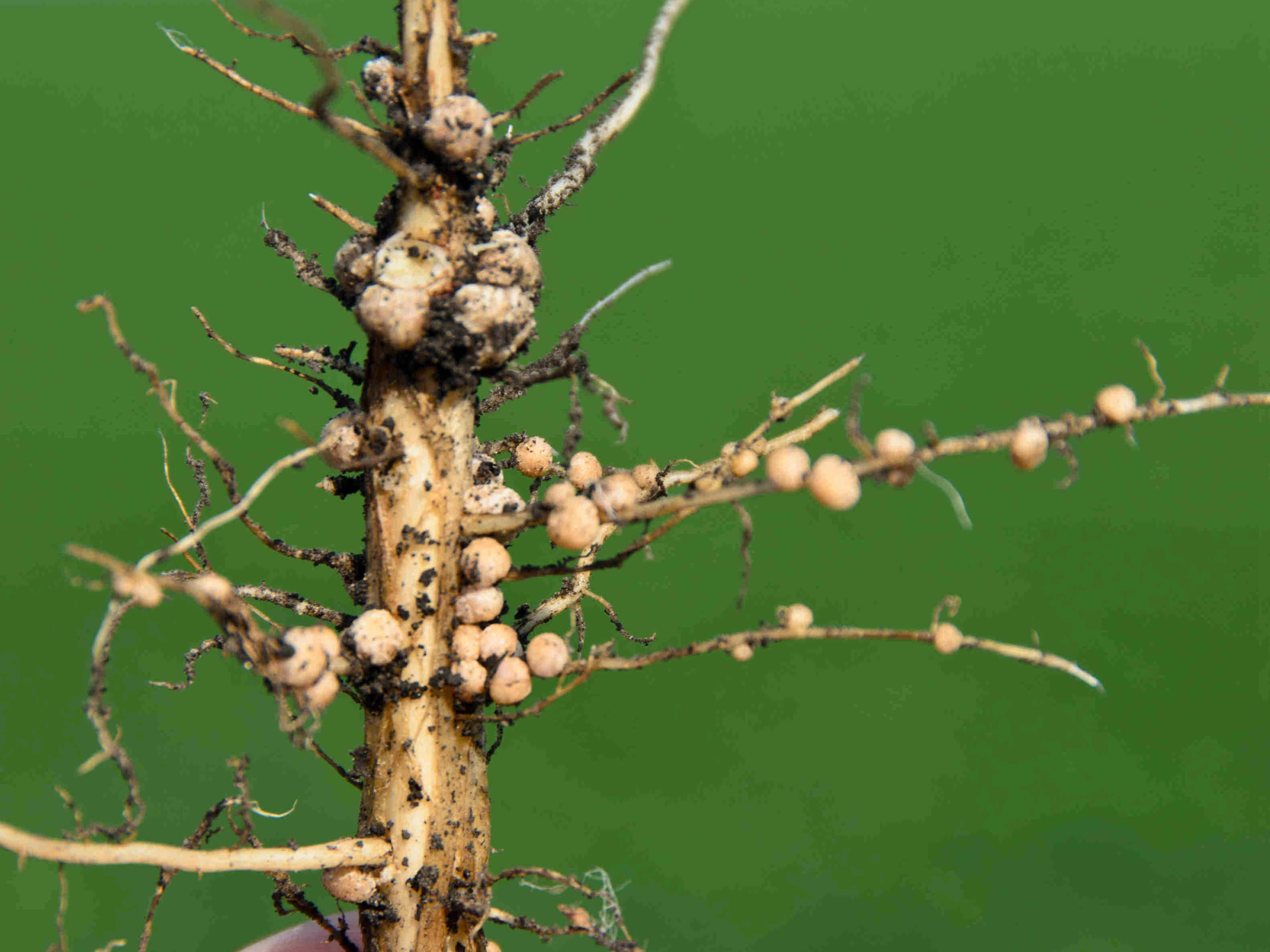Most plants cannot take nitrogen directly from the air and use it as a source of nutrition. However, legumes are an exception. Cooperating with rhizobia, a type of soil bacteria, legumes produce root nodules that are able to absorb nitrogen from the air and convert it into plant nutrition.

Nodules on the roots of a legume.
Nodules on the roots of a legume.
Rhizobia, discovered by Dutch microbiologist Martinus Beijerinck, were the first microbes to be isolated from the nodules on the roots of a legume in 1888. As the rhizobia invade the roots of the plants, the roots divide and grow rapidly to form small tumors known as nodules. The rhizobia convert the nitrogen from the air into ammonia, which is the nutrition plants can directly use. This process is called nitrogen fixation.
However, this is not a one-sided relationship. Legumes also provide nutrients and energy that rhizobia need for survival.
Micro earth
People often find it hard to understand the presence and role of microbes in their daily lives. They are hard to see, but they are everywhere. In this series, CGTN focuses on some of the smallest organisms in nature, and explores how these powerful organisms can save or destroy us.
Read more:
What microbe lives inside a boiling hot spring?
How one micro-animal could help humans travel to Mars
Glowing Bacterium: The secret of the glowing bobtail squids
(If you want to contribute and have specific expertise, please contact us at nature@cgtn.com)